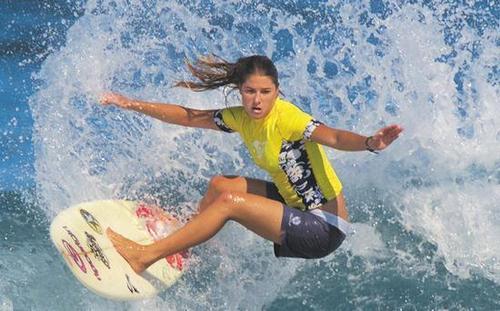Learning to Surf the Short Board
Learning to surf the short board seems to be the immediate goal of many new surf students. They have seen films or watch people at the beach and want to do the same.

Learning the Fundamentals
It takes mastery of the fundamentals best practiced on a high volume board first on foam waves. Then the surfer learns to ride bigger foam waves and real waves. When the fundamentals have been learned, he can start moving to shorter boards.
When learning to surf the short board, the wisest progression is to move from a high volume board to a shorter board 6 inches at a time while maintaining the width and thickness. This keeps the volume while improving the maneuverability.
Defining the Short Board
Technically, a short board begins at 6’10”, so getting there from an 8′ or 9′ soft top board takes a while. It should. If you move too fast, you become frustrated because the of the increase of difficulty and the declining success in the water.
The shorter boards take more stamina to paddle, don’t catch waves easily, and are harder to ride. The combination of the three can make surfing not fun very quickly. A foam wave is caught easily as there is a large window of time to get in front. A real wave, which a short board requires, is only open faced for a few seconds and positioning has to be right.
Building Courage is Huge
The biggest jump is the courage necessary to get in place on a short board and allow the real wave to rise under you and over your head before paddling. Mistakes now result in a pounding. Best to start with two to three foot waves. Short boards and real waves teach you how to fall and soon you learn how to protect yourself, but not without some hard lessons.
For Surf Lessons in Oceanside, see the Home Page
See a video on Carving Real Waves